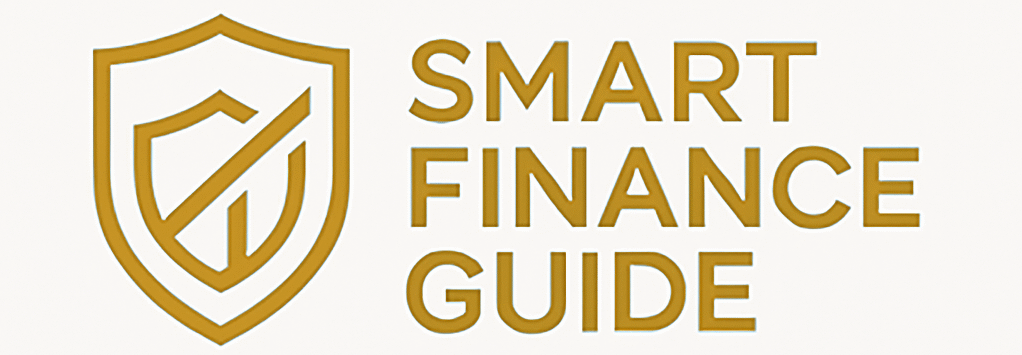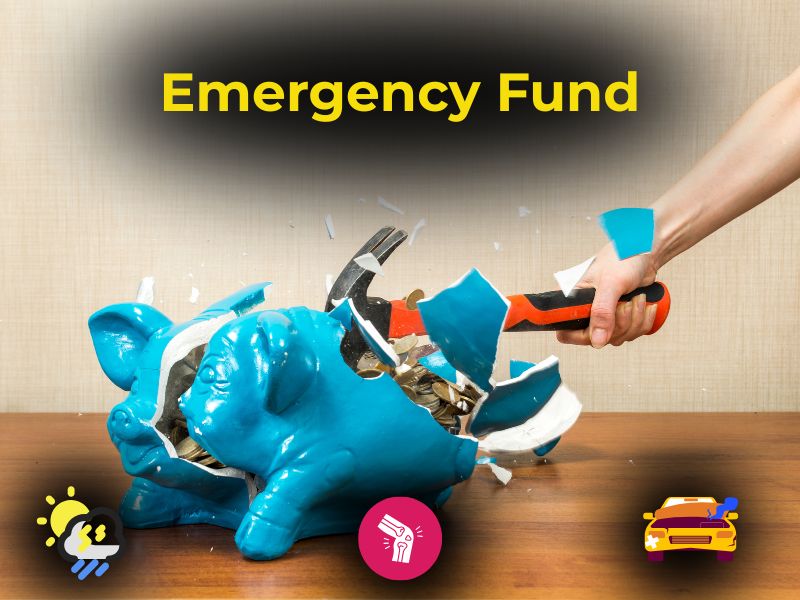Life is unpredictable. Cars break down, jobs are lost, medical bills pop up, and unexpected expenses can strike at the worst possible times. That’s why every solid financial plan starts with a crucial foundation: an emergency fund.
An emergency fund is your personal safety net — money set aside to cover urgent, unplanned expenses. It protects you from going into debt and gives you peace of mind during uncertain times.
In this article, you’ll learn what an emergency fund is, how much you need, where to keep it, and practical steps to build one quickly — even on a tight budget.
What Is an Emergency Fund?
An emergency fund is a dedicated pool of money used only for unexpected expenses, such as:
- Job loss or reduced income
- Medical emergencies
- Car or home repairs
- Urgent travel
- Unplanned bills
It’s not for vacations, new electronics, or planned purchases — it’s financial protection against life’s “what-ifs.”
Why You Need One
Without an emergency fund, unexpected costs can:
- Force you to use high-interest credit cards or loans
- Delay long-term goals like investing or home buying
- Add stress during already difficult moments
- Cause you to sell investments at a loss
Even a small emergency fund offers financial breathing room and flexibility.
How Much Should You Save?
The right amount depends on your lifestyle, income stability, and financial obligations.
General guidelines:
- Minimum: $1,000 (starter emergency fund)
- Standard: 3–6 months of essential expenses
- Self-employed or variable income: 6–12 months
Example Calculation:
Monthly essentials:
- Rent: $1,200
- Food: $400
- Utilities: $200
- Insurance: $300
- Transportation: $200
Total = $2,300/month
3-month fund = $6,900
6-month fund = $13,800
Start small — your first goal might be just $500 or $1,000, then build from there.
Where to Keep Your Emergency Fund
You want your emergency fund to be:
- Safe (not subject to market fluctuations)
- Accessible (available within 1–2 business days)
- Separate from your spending account
Best options:
- High-yield savings account (ideal choice)
- Money market account
- Online savings bank with FDIC insurance
✅ Avoid putting your emergency fund in investments like stocks or mutual funds — you don’t want it to lose value right when you need it.
How to Build an Emergency Fund Fast
1. Set a Realistic First Goal
Start with $500 or $1,000 if saving 3–6 months feels overwhelming. This momentum keeps you motivated.
2. Automate Your Savings
Set up automatic transfers from your checking to your emergency fund — weekly, biweekly, or monthly.
Even $25/week = $1,300/year
3. Cut or Pause Non-Essentials
Temporarily reduce:
- Streaming services
- Dining out
- Clothing or impulse shopping
Redirect those savings to your emergency fund.
4. Use Windfalls Wisely
Tax refunds, bonuses, gifts, or side income? Put a portion (or all) into your emergency fund.
Even $500 from a bonus gets you halfway to your first milestone.
5. Start a Side Hustle
Drive for a delivery app, freelance online, tutor, or sell unused items to quickly add extra cash to your fund.
6. Save Unexpected Savings
Car insurance refund? Lower utility bill? Apply the difference to your emergency fund instead of spending it.
7. Track Your Progress
Use a chart, app, or spreadsheet to visualize your savings growth. Small wins build big motivation.
When to Use Your Emergency Fund
Use it only when:
- The expense is urgent and unplanned
- You cannot cover it with regular income or budget
- It helps you avoid going into debt
Examples:
- Emergency dental surgery
- Job loss with no other income
- Major car repair
Don’t use it for predictable expenses like annual insurance premiums or holiday shopping — those should be budgeted separately.
How to Rebuild After Using It
After a withdrawal, make a plan to replenish your fund:
- Temporarily pause investing or discretionary spending
- Set a monthly goal (e.g., “replace $300/month until restored”)
- Treat rebuilding your fund as a top financial priority
You never know when the next emergency will hit — staying prepared is key.
Final Thoughts: Security First, Growth Second
Before investing or chasing financial freedom, the first step is financial stability. And that starts with a strong emergency fund.
It’s not just about the money — it’s about having the confidence to face life’s challenges without derailing your goals. Start small, stay consistent, and build a cushion that keeps you and your dreams safe.
FAQ – What Is an Emergency Fund and How to Build One Fast.
What exactly is an emergency fund?
An emergency fund is a savings buffer used only for unexpected and urgent expenses, like medical emergencies, car repairs, or job loss. It protects you from debt and financial stress.
How much should I save in my emergency fund?
Experts recommend starting with at least $1,000, then aiming for 3–6 months of essential expenses. If you’re self-employed or have variable income, 6–12 months is ideal.
Where should I keep my emergency fund?
Store it in a high-yield savings account, money market account, or online bank with FDIC insurance. It should be safe, separate from spending money, and quickly accessible.
How can I build an emergency fund quickly?
Automate savings, reduce non-essential spending, use windfalls like bonuses or refunds, and consider side hustles or selling items to increase your contributions.
When should I use my emergency fund?
Use it only for urgent, unplanned expenses you can’t cover with your budget — like job loss or emergency repairs. Avoid dipping into it for predictable or non-essential spending.

